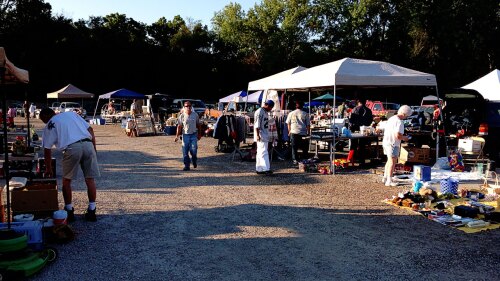The Kauffman Center for Performing Arts seeks to bring the community together and celebrate the city’s rich arts culture, ever since its opening in 2011. While you may have been in the audience for a symphony or ballet performance, we are going to show you a whole new perspective of the Kauffman Center — beyond the stage. For all of our visual learners, you’re welcome.
A look from outside
The outside of the Kauffman Center is just the first glimpse at the grand and sophisticated design you experience insides. The two half shells of vertical arches that make up the building’s silhouette each house a performance venue with a shared backstage area (we’ll get to that).
The 27 steel cables on the south side of the building are set in anchors that weigh ~1.5 tons. The anchors are an extension of the foundation beneath the building. When the steel cables were pulled taut during the construction process, the entire steel structure shifted two to six inches to the south — sounds a little scary, but this tension is what provides stability to the structure and keeps the glass lobby securely in place.
Brandmeyer Great Hall
The Brandmeyer Great Hall links Muriel Kauffman Theatre and Helzberg Hall — and is one of our favorite views of the Crossroads. The hall provides access to both venues and serves refreshments before performances and during intermission.
Helzberg Hall
Say hello to Helzberg Hall — a 1,600-seat, oval-shaped concert hall, home to the Kansas City Symphony. Because the stage extends into approximately one-third of the space, even the farthest seat in the house is only about 100 ft away.
Ever wonder what the view from the organ looks like? We hope you aren’t afraid of heights.
The Julia Irene Kauffman Casavant Organ, Opus 3875
“The organ is magnificent within itself,” said Sarah Beatty, Director of Theater Operations.
Accessed via an elevator backstage, fewer than 10% of the 5,548 pipes are visible to those in the hall. The largest pipe is 32 feet tall and weighs approximately 960 pounds — as seen above, that’s pretty tall.
Let’s go backstage
Backstage, the artists for both performance venues have dressing rooms, warm-up spaces, kitchens, and even a laundry room to utilize during their time at the Kauffman Center. There are also three green rooms in the facility with TV monitors that display a live stream of the stage.
Muriel Kauffman Theatre
The curtain was drawn while we were there, but the stage felt grand even without the view of the audience. The Muriel Kauffman Theatre seats 1,800 and was inspired by European opera houses, with multiple balconies along the sides of the theater. The theater is home to the Kansas City Ballet and the Lyric Opera of Kansas City, as well as touring Broadway shows.
Behind the scenes at Muriel Kauffman Theatre
Due to the nature of the performances, the Muriel Kauffman Theatre can take shape to many different needs of shows — hence this massive “elephant” door that allows set pieces to be transported directly from Broadway Boulevard.
The 5,000-sqft stage also includes an orchestra pit (which can house up to 90 musicians) and has a 74-ft tall fly system seen above.
Don’t look down
Welcome to the grid of the fly system — which is used to lift (or fly) components such as scenery and lighting from the stage. Thankfully, we were feeling like dare devils this day and checked out the epic above-stage view. Usually one to two crew members, known as riggers, will be up here at a time operating the components of the fly system. This is one of the safest rigging spaces in KC due to the width of the slats that run across the grid (basically, no one can fall through). Talk about where the magic happens.
Below the scenes
Literally. Remember that 5,000-sqft stage we were talking about? Well, you’re underneath it now. Fun fact: The stage is made up of “tiles” that can be removed to create illusions for the audience during a performance. Think: the Genie from “Aladdin” appearing from his lamp (or in this case, from below the stage).


























